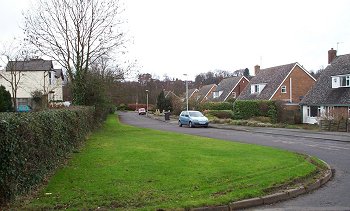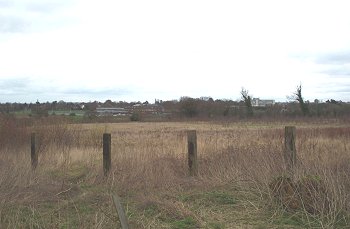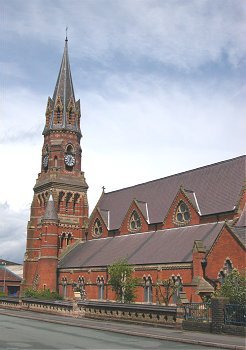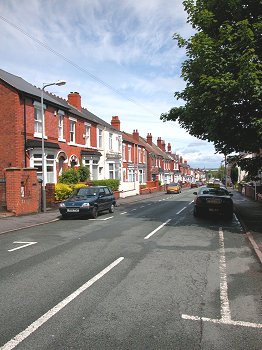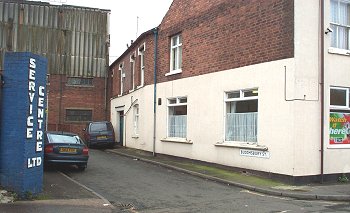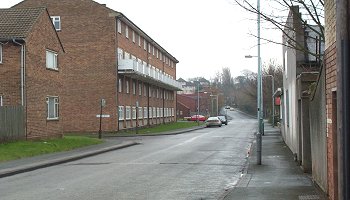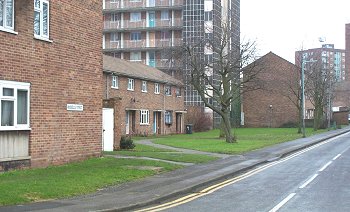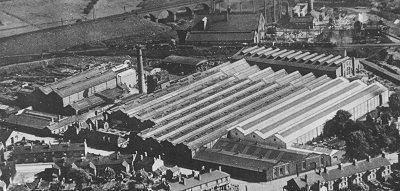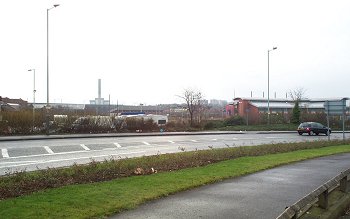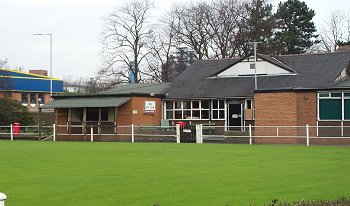Roots On the 5th of June 1836 Richard Jones married Mary Pursehouse in Tettenhall, Staffordshire. Richard senior (as we shall call him, to distinguish him from his son Richard) was 25 at the date of his marriage. His wife Mary was 22. Richard senior was born in 1811 and his wife, Mary, in 1813. There was a Mary Pursehouse born in Tipton on March 7th 1813. Her father was Joseph and her mother also Mary. There were two Richard Jones’s born in Tipton in 1811. Whilst Richard Jones is a very common name in the area, Pursehouse is less so, although not rare. The two together with the right years of birth does, however, suggest that there is a reasonable possibility that Richard and Mary were born in Tipton and moved to Tettenhall sometime later. If this is correct, they doubtless knew each other in Tipton before meeting up again and marrying in Tettenhall. We do not know where the father of Richard senior was born, but, with the name Jones, his origins are almost certainly Welsh, and he would have been part of the significant migration of the Welsh into the Black Country in the late 18th and early 19th centuries. Richard Jones junior was born at 11, Compton Hill, Compton on st November 1842. He had an elder sister, Hannah who was born in 1838. Richard junior’s birth certificate describes his father Richard as a "laborer". By the time of the 1851 Census, Richard senior is described as a "gardener" - a status he still enjoyed at the time of Richard junior’s marriage in 1865.
An interesting feature of the details in the 1851 Census is the occupations of the inhabitants of the cottages on Compton Hill. Richard senior is shown as a gardener, as is his next door neighbour. It is probably not unreasonable to infer from the location of the cottages, and the occupations of the inhabitants, that the cottages formed part of the Compton Hill House estate. If this assumption is correct, Richard senior almost certainly was a gardener on the estate. At the time of the 1851 Census Compton Hill House was occupied by George Owen and his family, and George Owen is described as being "of independent means".
For example, Bradmore, which is closer to the centre of present day Wolverhampton, was described in 1841 as " …. a small village of about a dozen cottages, almost secluded from the world …." Compton is likely to have been little different, and there was probably not much more than Compton Hill House and its estate cottages, with one or two other large houses in the general area, such as nearby Bantock Park. Wolverhampton at this time still occupied a relatively compact area around St Peter’s Church with the growing industrialised spread being mainly on the eastern side of the town. This phenomenon is not the result of haphazard development. In nearly every town in the British Isles the better residential areas are to be found to the west of the industrial areas so that the prevailing westerly winds blow away the smoke and general airborne pollution. Living in a rural area, in what was probably a tied cottage on the Compton Hill House estate, the Jones family would have enjoyed a much more pleasant standard of living than those of similar background living in, or adjacent to, the centre of Wolverhampton. The general standards of hygiene would have been better. Water supplies, doubtless, came from the clear streams which ran through the estate, such as Graiseley Brook, and sewage would have been disposed of in the traditionally effective, and hygienic ways, of rural communities. Human waste would have been collected in earth closets and used as manure. By contrast, in the town at this time, there was a considerable problem of raw sewage running untreated down the narrow alleyways, and the water supply was far from pure. Cholera epidemics in 1832 and 1849 were the result. The Jones family in rural Compton would have been at very little risk of contracting the disease.
On the Marriage Certificate Richard junior is described as a "Groom". He presumably worked in this capacity at one of the estates in the area, such as Graiseley; or it could have been with one of the local breweries tending the dray horses. Did he meet Ann Hancox, a cooper’s daughter, through such a connection? Whatever the truth, Richard did not stay in this employment for very long. Emily Mary, the eldest child of Richard and Ann was born just 51 days after their marriage. We cannot even rely upon this date being accurate. Births were frequently registered with false dates for two reasons. Firstly to legitimize the child, and, secondly, because there was a fine for not registering a birth within a month of the actual event. Did Ann go down the aisle with a bump or a baby? It is also of interest that Richard’s sister, Hannah, was a witness to the marriage and not Richard’s father or mother. Is there any significance in this? Were his parents present at the wedding? By the time of Emily’s birth, Richard’s job had changed from "Groom" to "Gun Lock Smith Journeyman," and his address to Bloomsbury Street. Bloomsbury Street is situated adjacent to the present day Ring Road between the Penn Road and Dudley Road. He had not moved very far.
Richard and Ann Jones, in common with many Victorian families, wasted no time in creating a large family. Emily arrived on November 21st 1865, followed by Charles in 1870, Edith in 1872, Lucy in 1874, Henry in 1876, Alice in 1879, Anne in 1881, and finally, Florence in 1884. By the time of the birth of Florence, Richard was approaching the age of 41.
By the time of the 1881 Census, Richard’s occupation had changed to "Engine Fitter" and the family were living in Russell Street, Wolverhampton. This is literally just round the corner from Zoar Street, so the family had not moved very far. The description "Engine Fitter" most probably refers to railway engines. The Shrewsbury & Birmingham Railway built its headquarters and repair shop in Wolverhampton. The preferred site was one that was both close to the railway and the centre of town. A site on the Stafford Road about three quarters of a mile from the centre of Wolverhampton was chosen. Construction began in July 1849 and was completed by November of that year – they did not hang around in Victorian times! This coincided with the opening of the railway. The site housed locomotive, carriage and wagon sheds alongside the repair shops and goods sheds.
The plan depended upon being able to obtain cheap land in Wolverhampton. A proposal to level the top of Dunstall Hill and use the excavated material to build up the lower slopes to form an extensive plateau foundered when the GWR failed to make a deal with the landlord. It was decided to enlarge the locomotive buildings in Swindon instead. Bearing in mind where Richard lived in 1881 ( Russell Street – probably no more than a mile from the GWR locomotive works), it is reasonable to assume that he was in the employ of the Great Western Railway. Whether or not he learned his engineering skills in this job, one can only conjecture, but he doubtless built upon whatever skills he had when he joined the company. The location of the GWR works could be of significance in the story of Richard Jones. It would have been within yards of the site of what became the Electric Construction Company works. What was to become the ECC began the manufacture of electric machines in 1882, although the ECC company had not been formed at this time. The business was started by Thomas Parker in the corner of the Patent Tip & Horse Shoe Company’s factory in Commercial Road, Wolverhampton. (Commercial Road is just to the east of the centre of town and runs from the Bilston Road towards Horseley Fields). The Patent Tip & Horse Shoe Company was owned by Bedford Elwell, and the two men soon joined forces to become Elwell-Parker Limited. This soon changed its name to Wolverhampton Electric Light, Power, Storage & Engineering Company Limited. This was not an entirely new venture for Thomas Parker. As early as the 1870’s he had been experimenting with dynamos at Coalbrookdale and eventually built a large dynamo for Coalbrookdale Iron Works. The Elwell-Parker company prospered and a new factory in Stafford Road, Bushbury was built in 1888. In May 1889 The Electric Construction Corporation Limited was formed. This was in fact an amalgamation of three companies. What was originally Elwell-Parker Limited, The Electric Power Storage Company Limited and The Railway Electrical Construction Company Limited. The list of the directors contained no less than five baronets and Thomas Parker was not even among them. He is described as Works Director but he did not apparently have a place on the main board of directors. The senior engineer was J.E.H. Gordon. In 1893 the company was reorganised again and became the Electric Construction Company Limited. Thomas Parker was either not happy with the new regime, or, alternatively, was ambitious to be his own boss again, and in 1894 he left the ECC to form his own company. It is of interest that he went into direct competition with the ECC. In 1895 the generating station for the Wolverhampton electricity supply was built in Commercial Road (appropriately next door to the site of the Elwell-Parker Company’s first premises). A list of suppliers of various pieces of equipment shows that the generators were supplied by the Electric Construction Company Limited and Thomas Parker Limited. The fore-runner of the ECC (Elwell-Parker Limited) was involved right from the start in all kinds of transport projects. As early as 1884 equipment was supplied for an electric traction system at Blackpool. It was a slot system and each car was driven by a single bipolar reversible motor. Richard Jones’s skills acquired as an engine fitter would, no doubt, have been in demand for this kind of project. Richard Jones may well have joined Elwell-Parker Limited at its Commercial Road premises before it moved to Bushbury in 1888. Some evidence for this is provided by his description in his eldest daughter Emily’s marriage certificate in 1887 as "Manager of Electricity Shops". "Shops" in this context is used in the old fashioned sense to mean somewhere where things were made rather than to indicate a retail outlet. Family folklore has rather assumed that Richard Jones had something to do with the founding of the ECC. This is obviously pure myth. He is described as "the first Works Manager of the Electric Construction Company" in a local history of Bushbury Parish & People. This is also probably inaccurate. Thomas Parker himself was probably the first Works Manager even though he is described as "Works Director" in the commentary on the formation of the ECC. Support for this view is given by the description of Thomas Parker’s resignation. This is couched in the following terms, " In 1894 Thomas Parker left to start his own company. He was replaced as Works Manager at Bushbury, by Mr A. B. Blackburn." In a report in ‘The Electrician’ of 1899 describing the works at Buhsbury, Blackburn is described as ‘the manager’. All this rather calls into question what the exact role of Richard Jones might have been. Clearly by 1900 he must have been in a senior position to be given Gorsebrook House to live in, and be described as ‘the first Works Manager’. Did Blackburn leave in 1899 to be succeeded by Richard Jones? Probably not. We are more than likely in the realms of loose nomenclature. Thomas Parker is most unlikely to have agreed to put his company into the newly formed Electric Construction Corporation Limited in 1889 simply to become the "works manager". In all likelihood he was more in the nature of what one would describe as the Managing Director in modern day terms. Whilst not necessarily on the main board of directors, he would have had the day to day management of the company. A. B. Blackburn would have taken over from him in this role. If this analysis be correct, Richard Jones would have been the works manager in the sense it would be understood today i.e. he would have been responsible for the physical management of the works at a practical level. This analysis makes sense from what we know about Richard Jones. He was obviously not an academic. He had progressed from what, at best, could be described as semi-skilled jobs, and along the way acquired more sophisticated skills. He was working in an environment at the cutting edge of technology and must have had an aptitude both to understand and develop the new technology to be able to hold down a position as "Manager of Electricity Shops". However, the wider skills of managing a business requiring financial, marketing and other allied skills would have almost certainly been beyond his abilities. Perhaps the most likely scenario is that Richard Jones joined Elwell-Parker Limited somewhere between 1881 (when he was described as an "Engine Fitter" in the 1881 Census) and 1887 when his description had changed to "Manager of Electrical Shops". The electrical shops in question were probably those of Elwell-Parker Limited. Richard would have retained this role when the company moved from Commercial Road to their new factory in Bushbury in 1888. When soon afterwards, in 1889, the ECC was formed by the amalgamation of Elwell-Parker Limited with two other companies, Richard Jones would have retained a continuing management role on the production side of the business. Whether he assumed overall day to day management of the production side of the entire expanded business at this time we do not know. What we do know for certain is that by 1900 he had become "Works Manager" for the entire ECC plant at Bushbury. Quite an advance from being a "Gun Lock Filer" some 25 years before. The ECC prospered right up to the 1960’s and had several other factories in Wolverhampton and abroad in South Africa and New Zealand. By the late 1960’s and early 1970’s the electrical engineering world had changed. The Italian competition was heavily subsidised by their Government, and Italian transformers could be purchased in the UK at prices less than it cost the ECC to produce the core alone. A process of amalgamation and takeovers took place to try and meet the Italian threat. The ECC was taken over by Aberdare Holdings of South Wales. It was not a success, and eventually the ECC became part of the Hawker Siddeley Group. Whilst this gave the ECC another reprieve, albeit in ever shrinking form, the curtain finally came down on the company in September 1985 when a sale to an American company fell through.
As the photograph shows, the Bushbury plant of the ECC was a substantial undertaking in its heyday. Gorsebrook House, where Richard Jones, and, later his second son Henry lived, nestles in the trees to the right hand side of the photograph. The site is now primarily an industrial estate. The modern day photograph can be compared with the old one by lining up the Gasworks in the top mid-right of the old photograph with the same Gasworks that exists to this day in the mid-left section of the modern day photograph. Gorsebrook House on the modern day photograph would have been situated just above the car to the right of the picture. The site is still primarily an industrial site. The area between the gasworks and the caravans in the picture below still houses a number of factories and warehouses.
The business made, amongst other things, ornate coffee and pepper mills, small metal figurines and filigree ornamental metal platters. The business of William Corns & Son Limited, which is in the steel industry, today stands on the site of the old ECC factory. This is the direct successor of the original 19th century business. A brief history of the Corns family is included at the end. |



